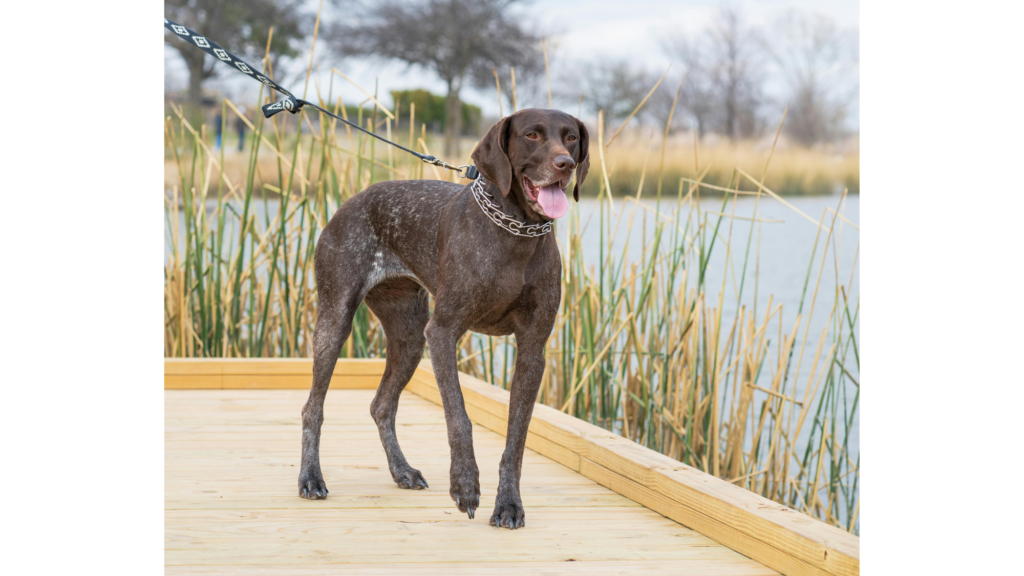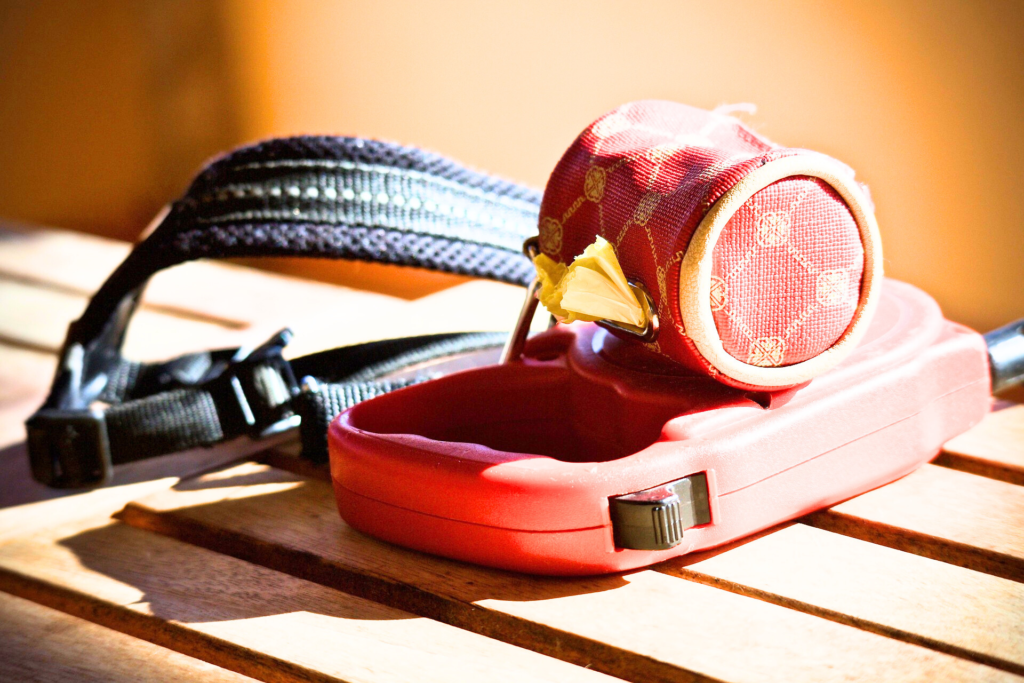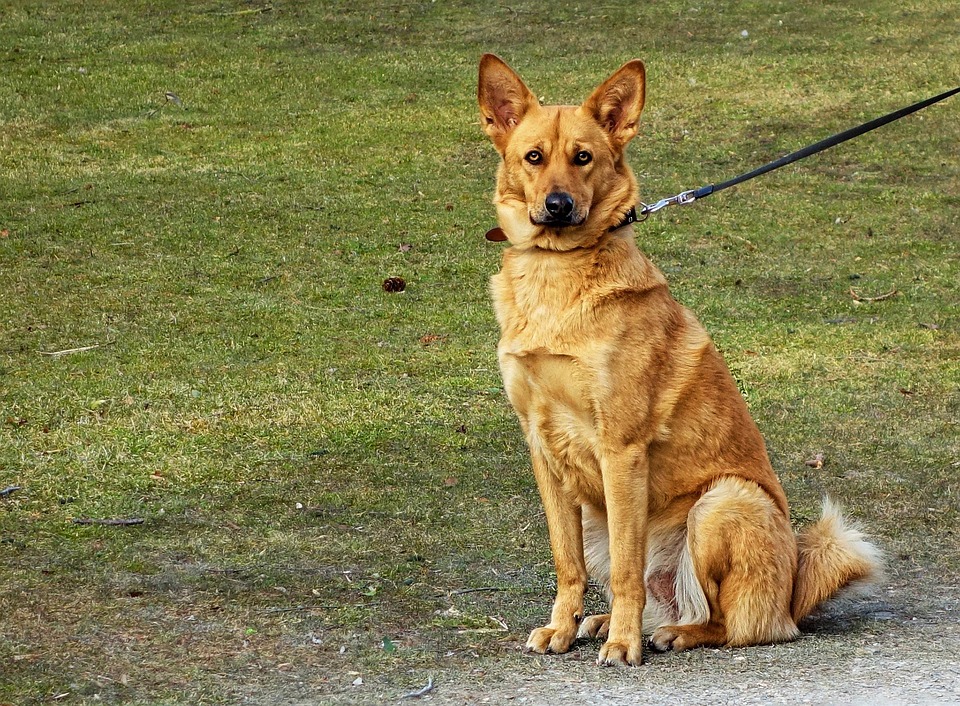As dog owners, we often think of leashes as the primary tool for keeping our pets safe while walking or training. They provide us with control, helping us guide our dogs and keep them from running into dangerous situations.
Understand if French Bulldogs can wear dog collars and how it affects their neck structure and overall health.
However, while leashes are essential for keeping our furry friends safe, improper use, or even a simple mishap, can result in injuries. One particularly concerning dog throat injury from leash treatment, which can happen more easily than many people realize.
In this article, we’ll discuss the causes, symptoms, and treatment of dog throat injuries caused by leashes. We’ll also explore preventative measures and provide tips to help keep your dog safe during walks, training, and playtime.
Blog Highlights
ToggleCauses of Dog Throat Injury from Leash Treatment
A dog’s throat can be injured from a leash in several ways, particularly if the leash is attached to a collar that puts pressure on the neck and throat area. Here are some of the primary causes of leash-related throat injuries:
1. Pulling on the Leash
One of the most common causes of throat injury occurs when a dog pulls on the leash, especially when the leash is attached to a collar that constricts around their neck.
Dogs that tend to pull on walks (a behavior that is common, especially in younger or high-energy dogs) can exert significant pressure on their throat. This pressure can cause various injuries, from bruising and inflammation to more severe damage like tracheal collapse.
When a dog pulls forcefully against a collar or harness, the following things can happen:
- Tracheal Injury: The trachea, or windpipe, can be compressed, leading to irritation, bruising, and sometimes long-term damage. Repeated pulling can worsen this damage, causing chronic breathing problems and discomfort.
- Strangulation: If the leash is too tight, especially when the dog pulls or gets excited, it can result in choking or strangulation, blocking the airflow and causing a medical emergency.
- Neck Strain: The muscles and soft tissue in the neck can become strained from the constant pressure exerted by pulling, leading to soreness and discomfort for the dog.
Explore the best dog collars for French Bulldogs to keep them comfortable while ensuring durability and style.
2. Using a Choke Chain or Prong Collar
Some dog owners use choke chains or prong collars as a means to correct a dog’s pulling behavior. While these tools can be effective in the short term, they can also cause significant harm to a dog’s throat and neck. These devices apply pressure on the dog’s throat when the leash is pulled, which can lead to injuries such as:
- Tracheal Damage: The prongs or choke chain can cause direct damage to the dog’s trachea, leading to bruising, swelling, and even permanent injury.
- Pain and Discomfort: These collars can cause significant discomfort for the dog, as the constant pressure and pinching can lead to emotional distress as well as physical pain.
- Increased Stress: Dogs wearing these types of collars may become more stressed or anxious due to the pain associated with pulling, which can lead to a negative feedback loop, further exacerbating their pulling behavior.

3. Improper Fit of the Collar
An improperly fitted collar can cause significant harm to a dog’s throat. A collar that is too tight or too loose can result in direct injury or cause discomfort that may lead the dog to try to escape, further increasing the risk of injury. Common problems with collar fit include:
- Tight Collars: A collar that is too tight can apply constant pressure on the dog’s neck, leading to difficulty breathing, choking, and even damage to the windpipe.
- Loose Collars: If a collar is too loose, it can slip around or get caught on objects, which could lead to strangulation if the dog’s leash becomes snagged.
Find the best dog collars for Dachshunds that accommodate their long bodies and prevent strain on their necks.
4. Sudden Jerks or Pulls
Sometimes, injuries happen suddenly when an owner jerks the leash too hard, either to correct behavior or to prevent the dog from darting into traffic. This quick, sharp movement can cause whiplash-like injuries to the dog’s throat, resulting in trauma to the trachea or neck. The rapid forceful movement can also cause:
- Soft Tissue Injury: The neck muscles, ligaments, and tendons can be overstretched or torn, leading to pain and swelling.
- Tracheal Collapse: In more severe cases, the sudden jolt can lead to or worsen a condition known as tracheal collapse, which is a chronic condition where the windpipe becomes weak and collapses.

5. Tight Leash with a Retractable Leash
Retractable leashes, while offering more freedom to dogs, also come with risks. If the leash is extended and suddenly retracts, the abrupt tension can cause the dog to choke or suffer a throat injury. A sudden jerk can strain or injure the dog’s throat, especially if the collar is not designed to handle the force.
Get insights into what is best for Dachshunds: a collar or harness for their safety, comfort, and health during walks.
Symptoms of a Throat Injury in Dogs
If your dog has suffered a throat injury from a leash, it’s crucial to be able to recognize the symptoms. The signs of throat injury can vary depending on the severity of the injury, but common symptoms include:
1. Coughing or Gagging
Coughing, especially after walks, may indicate that your dog is suffering from a throat injury. Gagging may also occur, particularly if there’s swelling or damage to the trachea. This could be a sign that the airway is partially obstructed or irritated.
2. Difficulty Breathing
If your dog is struggling to breathe or seems to be breathing more heavily than usual, this could indicate a more severe injury to the throat. In extreme cases, the dog may have difficulty catching their breath, which requires immediate veterinary attention.
3. Lethargy or Lack of Interest in Activity
A dog with a throat injury may not have the energy or enthusiasm for walks or play that they usually have. The pain from the injury, along with possible breathing difficulties, may make the dog more lethargic and less inclined to move around.
4. Changes in Barking or Voice
If your dog’s bark sounds hoarse, weak, or raspy, it could be a sign of a throat injury. Damage to the vocal cords or other soft tissues in the throat can affect the quality of your dog’s voice.
5. Pain or Sensitivity Around the Neck
If your dog winces, yelps, or becomes agitated when you touch their neck, it could indicate that there’s pain or swelling in the area. This is a strong indication that the dog may have suffered a soft tissue injury or internal trauma.
To discover what activities bring joy to Australian Cattle Dogs, check out this detailed guide on What Do Australian Cattle Dogs Love.

Treatment for Dog Throat Injury from a Leash
If you suspect that your dog has suffered a throat injury from their collar or leash, it’s important to seek veterinary care as soon as possible.
A veterinarian will be able to perform a thorough examination to determine the extent of the injury and recommend appropriate treatment. The treatment for throat injuries can vary depending on the severity, but the following are common approaches:
1. Rest and Limited Activity
For minor injuries, the vet may recommend rest and limited activity. This helps prevent further strain on the throat and allows the tissues to heal naturally. Your dog may need to stay indoors and avoid exercise for several days or weeks.
2. Pain Management
If your dog is in pain, your vet may prescribe pain relief medication or anti-inflammatory drugs to help alleviate the discomfort. These medications help reduce swelling and promote healing.
3. Collar or Leash Adjustments
To prevent further injury, the vet may suggest switching to a different collar or using a harness instead of a collar. A no-pull harness is often recommended for dogs with throat injuries because it alleviates pressure from the neck and distributes it more evenly across the chest.

4. Surgical Intervention (In Severe Cases)
In extreme cases, such as when there is significant damage to the trachea or vocal cords, surgery may be required. Surgical interventions can repair the damage and help restore proper function to the throat.
5. Tracheal Support Devices
In some cases, dogs may require a tracheal stent or other supportive devices to keep the airway open while healing. These devices help prevent the collapse of the trachea and promote normal breathing.
To find the ideal collar size for your Australian Cattle Dog, check out this guide on What Size Collar for Australian Cattle Dog for helpful tips on measurement and fit recommendations.
Prevention: How to Avoid Dog Throat Injuries from a Leash
Preventing throat injuries caused by leashes is essential to your dog’s well-being. The following tips can help you avoid these injuries and keep your dog safe:
1. Use a Properly Fitted Collar
Ensure your dog’s collar fits properly — it should be snug but not tight, and you should be able to fit two fingers between the collar and your dog’s neck. Regularly check the fit to ensure it hasn’t become too loose or tight over time.
2. Consider a Harness Instead of a Collar
A harness is often a safer alternative to a collar, especially for dogs that pull. Harnesses distribute pressure over a larger area, avoiding the direct pressure on the throat that collars create. Look for harnesses designed to prevent pulling, such as front-clip harnesses, which discourage pulling behavior.

3. Train Your Dog to Walk Without Pulling
Training your dog not to pull on the leash can help prevent the risk of throat injuries. Positive reinforcement techniques can be used to teach your dog to walk calmly at your side. Regular training sessions will improve your dog’s leash manners and reduce strain on their neck.
4. Avoid Choke Chains and Prong Collars
Avoid using choke chains and prong collars, as they can cause significant harm to your dog’s throat. These devices may provide quick results but come at the cost of your dog’s health and safety.
5. Use a Non-Retractable Leash
A non-retractable leash gives you more control over your dog and reduces the risk of sudden jerks or pulls that could cause injury. Retractable leashes should only be used in safe, controlled environments where your dog is not at risk of sudden jerks.
Find out what color collar looks best on a Rottweiler to complement their bold appearance and highlight their unique features.
Conclusion
Throat injuries caused by leashes are a serious concern for dog owners, but with proper care, attention, and preventive measures, you can help protect your dog from harm. By choosing the right equipment, training your dog, and staying vigilant during walks and playtime, you can reduce the risk of throat injuries and ensure that your dog stays happy, healthy, and safe.
Discover what size collar is best for a French Bulldog puppy to ensure both safety and comfort during their growing stages.
If you suspect your dog has suffered a dog throat injury from leash treatment, it’s important to seek veterinary care promptly. Early detection and appropriate treatment can help prevent long-term damage and promote a full recovery.





